
The Mango Tree (amba) is a perennial, evergreen tree that grows slowly and can reach a height of thirty m. Its leaves are approximately thirty cm long and five cm wide. It is cultivated in several regions of the Kingdom of Saudi Arabia. The beginning of mango cultivation in the Kingdom The oldest mango tree planted in the Kingdom is located at the Agricultural Research Center in Jazan Province . It was planted in 1972 and has grown to about three m tall. This marked the start of the center'...
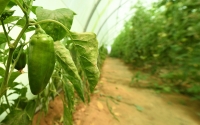
Vegetable Cultivation in the Kingdom of Saudi Arabia is widespread across various provinces of the Kingdom, with different types cultivated according to each area's climate, planting seasons, and the vegetables' tolerance to heat and cold. There are winter and summer crops, as well as hydroponic farming, greenhouse farming, organic farming, and traditional farming in open fields. The Kingdom produces agricultural crops in various provinces, depending on the climate and soil type suita...
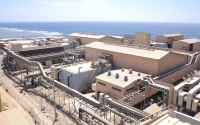
The history of water desalination in the Kingdom of Saudi Arabia dates back to 1907 when a coal-powered machine for distilling water vapor was salvaged from a shipwreck and installed on the shore of Jeddah. It was named 'al-Kandasa,' derived from its Latin name (condenser). In 1926, the Founding King Abdulaziz Bin Abdulrahman Al Saud, ordered the importation of two machines for seawater distillation to meet the needs of Hajj and Umrah pilgrims and residents of Jeddah. The journey cont...
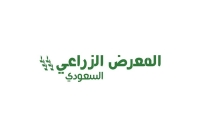
The Saudi Agriculture Exhibition is an annual event that serves agricultural sector leaders in the Kingdom of Saudi Arabia and around the world. It is held in the capital, Riyadh, and showcases the latest agricultural innovations and solutions. The exhibition aims to bring together business leaders, industry specialists, decision-makers, and vendors to present their innovative solutions on an exclusive platform. It is supervised by the Ministry of Environment, Water, and Agriculture. The exhibi...
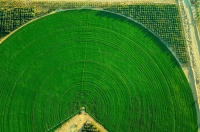
Irrigation of Agricultural Crops in the Kingdom of Saudi Arabia refers to the systems used to deliver water and irrigate crops, trees, and green spaces in the Kingdom. These systems contribute to saving water, energy, and labor. Modern irrigation systems are divided into two groups: sprinkler irrigation systems and drip irrigation systems. These systems deliver irrigation water from its source through a network of pipes, either above or below the soil surface, to reach the plants via sprinklers...

Arabian Jasmine or Sambac Jasmine (Jasminum sambac, Oleaceae), is a flowering plant from the Oleaceae family. It is native to South Asia and is cultivated in Riyadh Province in the Kingdom of Saudi Arabia. It was transported from its native South Asia by Arab merchants on their trade routes westward. However, it does not thrive in Riyadh, likely due to its sensitivity to frost and extreme cold during winter. Characteristics of Arabian jasmine The Arabian jasmine plant has evergreen foliage and ...
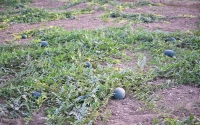
Watermelon Cultivation in Saudi Arabia, locally known as ' al-habhab ,' is one of the agricultural crops in the Kingdom. It surpasses self-sufficiency levels with its net production from scattered farms in most regions of the Kingdom. According to the Ministry of Environment, Water, and Agriculture , watermelon crops in the Kingdom achieve a self-sufficiency rate of 99 percent. It is cultivated over geographical areas exceeding 23.45 thousand ha, with a net production reaching approxi...
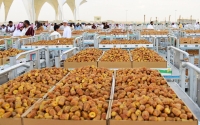
In 2020, the Kingdom of Saudi Arabia's production of dates reached 1.5 million t, with a self-sufficiency rate of 125 percent. According to the annual report of the National Center for Palms and Dates in 2020, Saudi Arabia ranked second in the world in dates production with 17 percent of the total global production. On the other hand, more than 1.7 million palm trees received the Saudi Dates Mark , equivalent to 5 percent of the total number of palm trees in Saudi Arabia , which exceeds th...
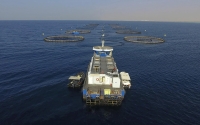
Aquaculture in Saudi Arabia began with the establishment of Jeddah Fisheries Research Center in 1982. The center's mission was to study local fish species suitable for aquaculture, train national personnel, provide technical and advisory support to emerging aquatic farms, and introduce hatchery and aquaculture techniques. Several aquatic species have been cultured in Saudi Arabia, including shrimp, which is one of the most important cultured species in the Kingdom. Among the key marine fis...
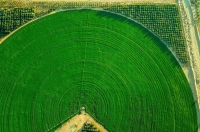
The National Agriculture Strategy is a working framework for developing agricultural activities in the Kingdom of Saudi Arabia. It serves as a reference framework for the Ministry of Environment, Water, and Agriculture, contributing to the establishment of laws, legislation, and guidelines. The strategy represents a national plan for the Environment, Water, and Agriculture sector, approved by the Council of Ministers in 2020. It transferred seven responsibilities from the Ministry of Municipali...

Fruit Cultivation in the Kingdom of Saudi Arabia involves growing fruits in various environments within the Kingdom. The process starts with planting seeds or saplings of fruit trees and continues until the harvest of crops. The farming methods vary depending on the environment, including soil type, climatic conditions, water availability, and the nature of tree growth. Fruit production in the Kingdom The Kingdom produces and exports many types of fruits globally, such as oranges, apples, grape...